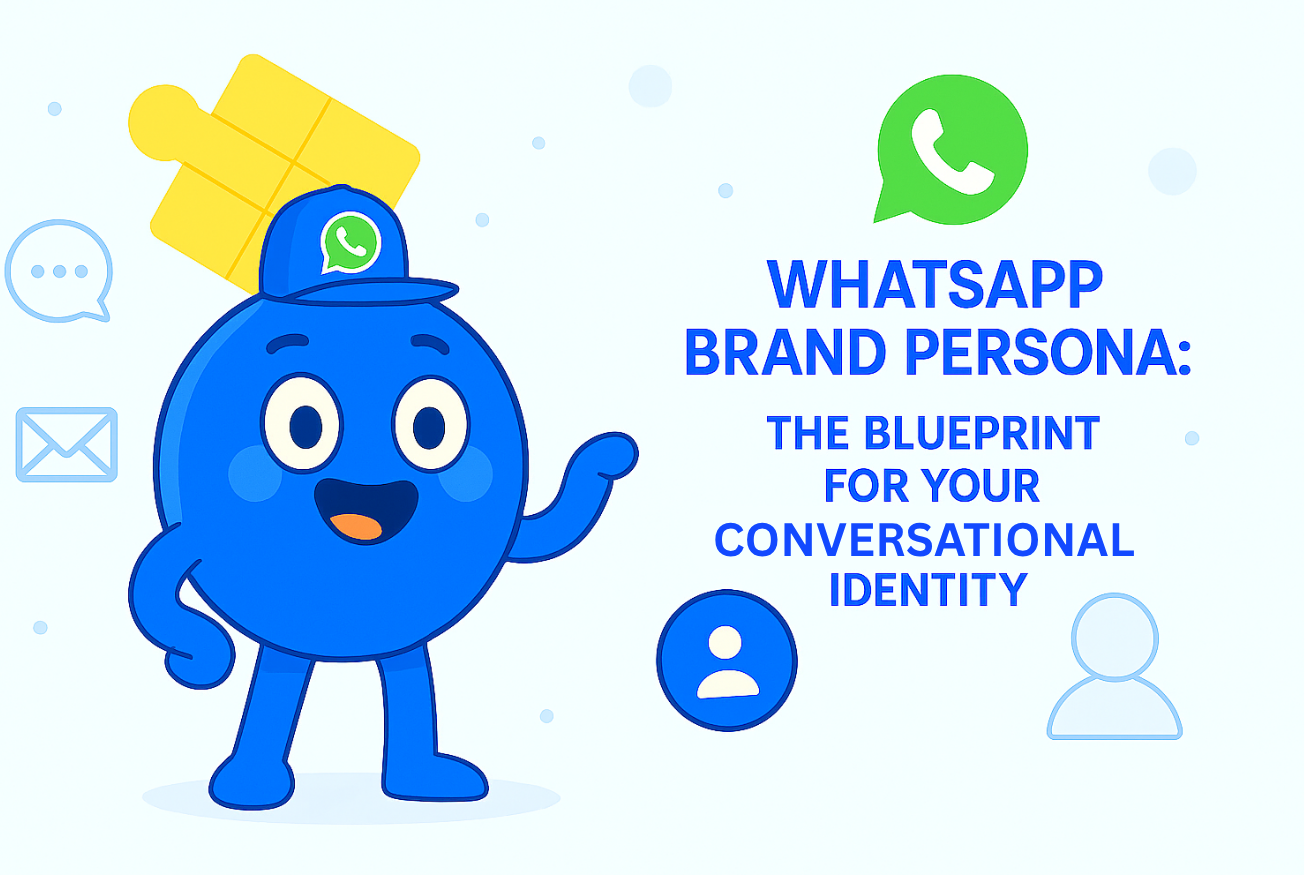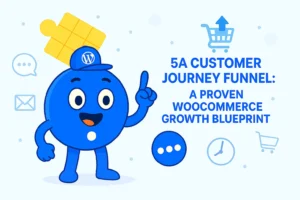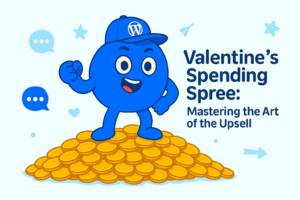WhatsApp Brand Persona: The Blueprint for Your Conversational Identity
When a potential customer taps that WhatsApp button on your website – perhaps a sleek, inviting one integrated seamlessly with a tool like Floating Awesome Button – what kind of experience do they step into? Are they met with the authentic essence of your brand, or a bland, inconsistent digital voice that leaves them guessing who they’re truly talking to?
In today’s fast-paced digital world, your WhatsApp conversations are more than just messages; they’re direct, personal windows into your brand’s personality. Yet, for many businesses, this crucial touchpoint remains an untapped opportunity, a place where generic responses and shifting tones can inadvertently erode trust rather than build it. You meticulously craft your visual brand; shouldn’t your conversational brand receive the same attention?
The truth is, your WhatsApp presence possesses an “invisible UI” – a unique conversational identity that subtly shapes every customer’s perception. The warmth in your greeting, clarity in your answers, and consistent personality make your brand feel genuinely human and relatable. This isn’t just about what your messages say, but the compelling way they say it.
This article is your definitive blueprint. We’ll dive deep into crafting a powerful WhatsApp brand persona, transforming your chats from forgettable transactions into engaging, trust-building dialogues. Get ready to unlock the secret to a consistent, compelling, and authentically you voice that turns every message into a memorable connection.
Introduction: Why Your WhatsApp Brand Persona Matters
The digital world is changing fast, and messaging apps like WhatsApp are becoming essential for businesses to connect with customers. This shift is not just about keeping up with technology—it’s a strategic necessity. Consumers are choosing messaging apps over traditional communication channels like emails or phone calls, signaling a major change in how businesses need to engage with their audience.
In fact, 75% of customers make a purchase after interacting with a business on a messaging app. This shows just how powerful these platforms are in driving conversions and sales.

And it’s not stopping here: The global chatbot market is projected to hit $46 billion by 2029, with 80% of companies planning to adopt AI-powered solutions for customer service by 2025. These numbers demonstrate how essential it is for businesses to embrace AI and messaging apps.
Now, let’s talk about conversational identity. This is where the magic happens. A brand’s persona isn’t just about looking good—it’s about how the brand communicates. It’s the unique voice that reflects your brand’s personality. On platforms like WhatsApp, your AI-powered chatbot or automated messages need to sound like you, not just any generic bot. Consistency is key: When your brand’s voice is consistent, customers feel like they’re engaging with a friend, not a machine. This builds trust and strengthens the relationship.
But here’s the big takeaway:
A well-crafted brand persona does more than handle transactions.
While AI initially focuses on automating tasks to save time and money, it’s the personal touch that makes a real difference. When your brand speaks in a consistent, relatable voice on WhatsApp, it doesn’t just help you close sales—it builds long-term relationships with customers.
The real value comes when businesses design a persona that’s both efficient and personal. This combination builds trust, boosts loyalty, and ultimately drives business success. So, if you want to stand out, focus on crafting a persona that feels human, relatable, and authentic—this is how you win customer loyalty in the digital age.
Foundational Principles: Understanding Your Conversational Persona
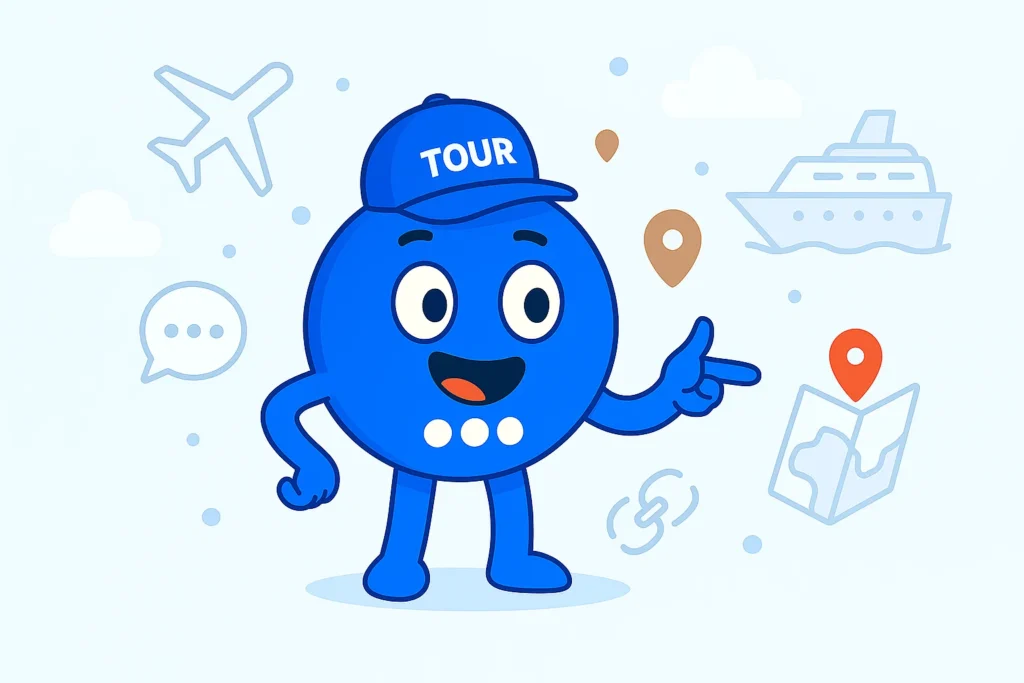
To effectively create a WhatsApp brand persona, it is crucial to distinguish between brand voice and brand tone. These two elements, while interconnected, serve different purposes in communication.
a. Brand Voice
- This is the consistent expression of your company’s personality and core values across all communications.
- It reflects the brand’s “timeless, unwavering” essence, ensuring that every interaction consistently aligns with the brand’s identity.
- For instance, a brand may maintain a “friendly” or “authoritative” voice across all platforms.
b. Brand Tone
- In contrast, tone refers to the emotional inflection applied to communication in different situations.
- Brand tone adapts to the context compared to the brand voice, which remains the same. Therefore, it allows for more situational nuance.
- For example, a “friendly” brand voice might adopt a “comforting” tone during customer service issues or a “cheerful” tone when introducing new products.
- This adaptability ensures that the core personality is maintained while the interaction feels appropriate for the moment.
The Psychology Behind Effective Personas: Archetypes, Storytelling, and User Connection
A strong WhatsApp brand persona leverages human psychology to build trust and foster engagement. Crafting a distinct character or mascot is more effective than relying on an abstract company name or logo.
a. Archetypes
- Psychologist Carl Jung’s archetypes—such as the Hero, Outlaw, Sage, or Caregiver—are universally familiar and provide a framework for developing a persona.
- Brands can strategically combine archetypes to create a richer, more nuanced character, setting user expectations and making the brand more relatable.
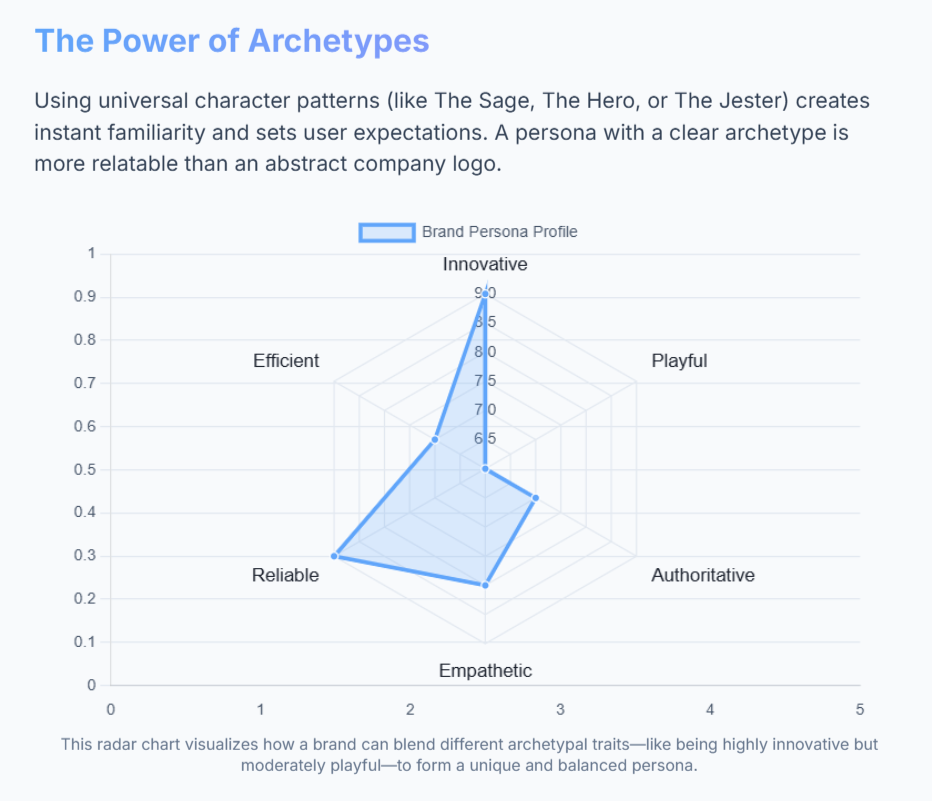
b. Storytelling
- Storytelling enhances emotional engagement, helping users connect deeply with the persona.
- For example, brands like Cabbage Patch Kids developed elaborate backstories for each doll, creating a cultural connection and increasing the persona’s “stickiness” in users’ minds.
c. Similarity Bias
- People tend to trust and connect with entities that resemble them.
- Designing a chatbot persona to align with the user’s emotional state or personality can improve credibility and make interactions feel more genuine.
- For example, matching an introverted user with a more reserved bot
By combining archetypes, storytelling, and similarity bias, brands can create personas that are not only efficient but also emotionally resonant. This fosters deeper engagement, trust, and long-term brand loyalty, turning transactional interactions into meaningful relationships.
Table 1: Psychological Principles in Chatbot Persona Design
| Principle | Description/Concept | Application in Chatbot Persona Design | Benefit/Outcome |
| Archetypes | Universal, innate character patterns (e.g., Hero, Sage, Jester) that resonate culturally. | Choose a brand-aligned archetype (or combination) to define core personality. | Sets user expectations, provides broader meaning, increases relatability. |
| Storytelling | Narrative structure (Setting, Plot, Characters, Mood) used to convey ideas and emotions. | Craft a compelling backstory or narrative for the bot; integrate story elements into interactions. | Fosters deeper empathy, makes complex ideas understandable, creates “stickiness” and memorability. |
| Similarity Bias | Tendency to like and trust entities perceived as similar to oneself. | Tailor the bot’s disposition (e.g., introverted/extroverted, formal/casual) to match target audience traits. | Increases perceived credibility, fosters liking and trust. |
| Gender | The perceived gender (or lack thereof) of the bot, especially in voice interfaces. | Consider the social implications and audience expectations when assigning or implying gender for the bot. | Influences user perception and interaction dynamics; crucial for voice interfaces. |
Identifying and Segmenting Your Target Audience for Tailored Conversations
To create effective conversational experiences, it is essential to deeply understand your target audience. A brand “can’t design the right personality without knowing your customer,” which requires comprehensive user research.
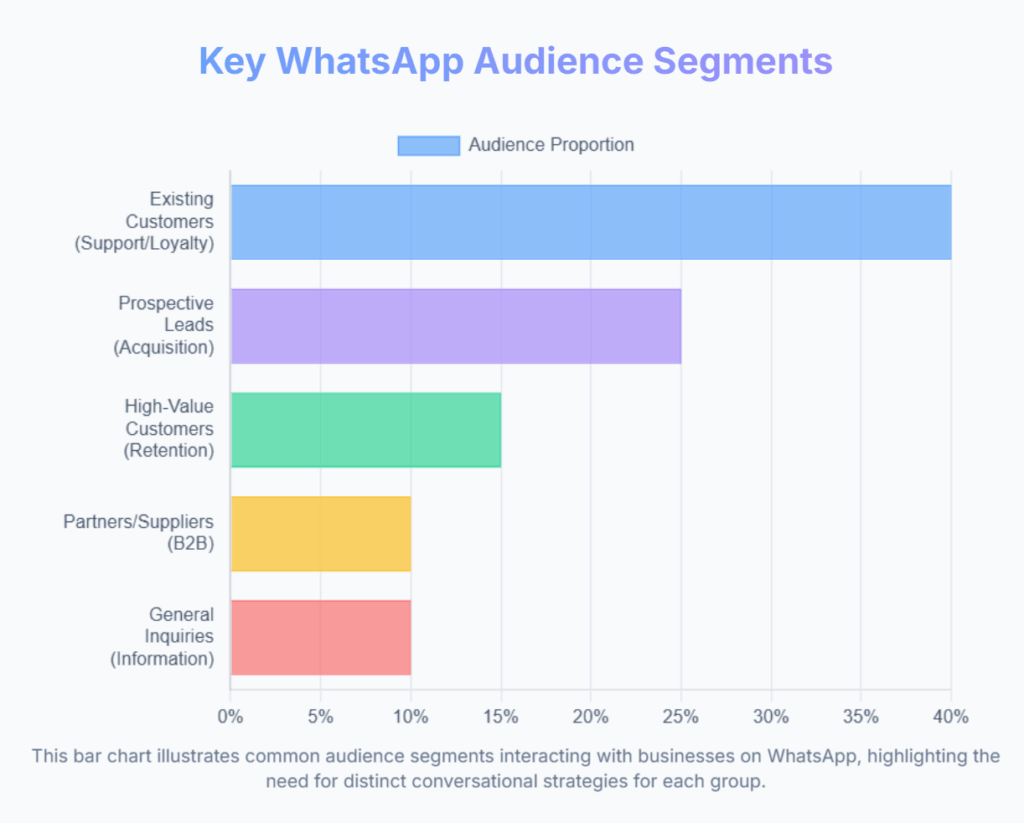
a. Key Characteristics
Begin by asking questions such as:
- What is the typical age, geographic location, and gender of your audience?
- What are their hobbies and interests?
- What personality would they respond best to in a chatbot?
It is also important to understand when users are most likely to interact with the bot and how they might be feeling at that moment. This contextual understanding enables more personalized and effective communication.
b. Psychographics, Behaviors, and Firmographics
- Go beyond demographics by considering attitudinal traits, motivations, and lifestyle preferences that influence behavior.
- For example, if a segment values sustainability, the bot can adapt its language to reflect this priority, making the conversation more relevant and engaging.
c. Developing User Personas
- Create semi-fictional personas that represent key audience segments.
- These should include demographics, psychological factors (goals, pain points), and typical behaviors.
- Tailoring the bot’s tone, pacing, and types of questions based on these personas ensures that each interaction is impactful and resonates with users.
d. Dynamic Persona Adaptation
- For dynamic platforms like WhatsApp, personas must be fluid and adaptable.
- By segmenting users based on emotional state, attitudinal traits, and real-time context, the chatbot can adjust its tone and approach to fit users’ current needs.
- This flexibility is at the core of hyper-personalization, a growing trend in conversational AI.
In crafting your WhatsApp brand persona, it’s essential to integrate a clear, consistent brand voice with an adaptable brand tone. Additionally, leveraging human psychology through archetypes and storytelling, and deeply understanding your audience, allows you to create a dynamic and personalized experience. By continuously adapting to real-time contexts and segmenting users effectively, you can foster meaningful relationships, increase engagement, and build long-term brand loyalty.
The Blueprint: Crafting Your WhatsApp Conversational Identity
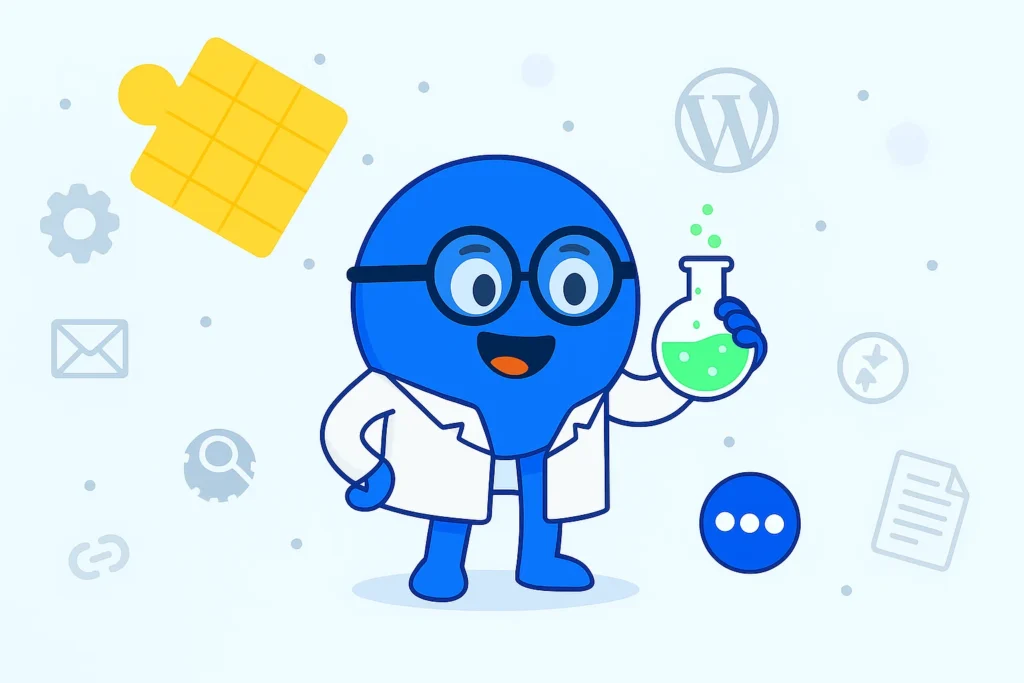
Creating an effective conversational identity involves translating your brand’s core values into distinct traits, tone, and language that consistently resonate with customers. This process begins with understanding your brand’s foundation and extends to defining its voice and interaction style, ensuring the bot reflects the brand’s identity authentically.
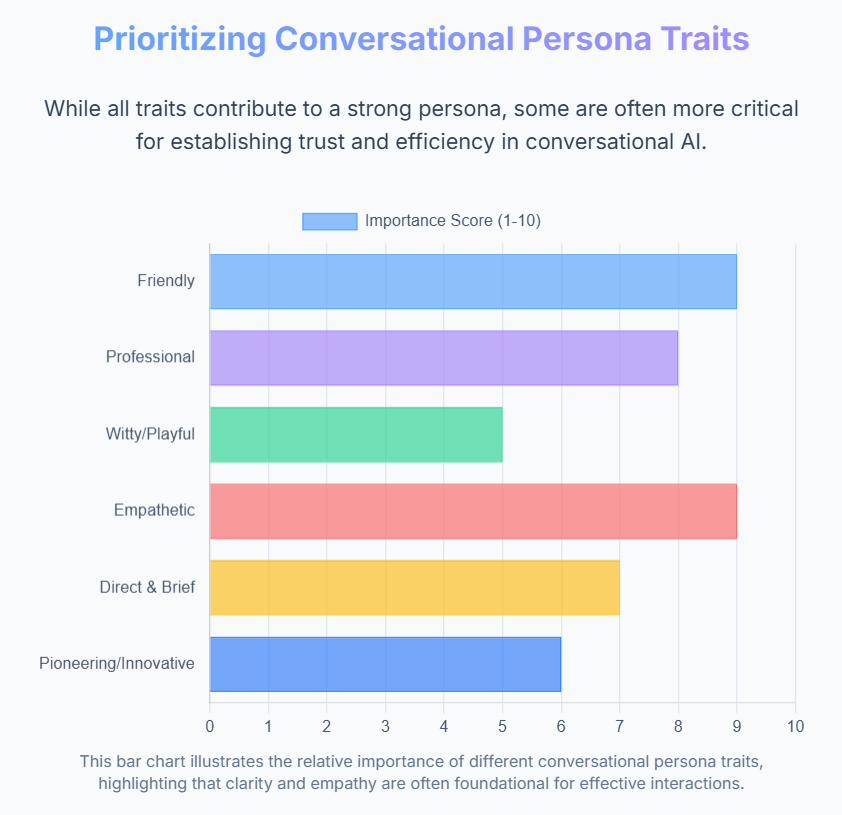
1. Translating Core Brand Values into Conversational Traits and Vocabulary
Brand vocabulary shapes how customers perceive your brand, guiding every conversation and reinforcing trust and differentiation.
Defining Brand Foundation
Begin by clearly articulating your brand’s purpose, vision, mission, and values to create a consistent voice.
Identifying Key Conversational Traits:
- Societal Role: Is your brand a connector, leader, or challenger? Words like “belonging” (Airbnb) or “innovation” (Apple) set the tone.
- Morality: Reflect ethical principles such as integrity or transparency.
- Attitude: Define the brand’s worldview (e.g., optimistic, realistic), using words like “happiness” (Coca-Cola).
- Power: Determine the brand’s influence (e.g., “empower”, “inspire”).
- Identity: Highlight uniqueness with words like “handcrafted” or “cutting-edge”.
- Business Operations: Convey priorities with terms like “streamlined” or “24/7 support”.
- Ideology/Philosophy: Use words that represent your brand’s beliefs, like “eco-friendly” for sustainability.
Brand Voice Chart:
Create a chart that outlines key vocabulary, tone guidelines, and “Do’s” and “Don’ts” to ensure consistency and authenticity in communication.
2. Designing the Chatbot’s Personality: Tone, Politeness, and Interaction Style
The chatbot’s personality should align with the brand’s identity in tone, style, and interaction.
Persona Attributes:
- Name: Choose a memorable name that aligns with the brand.
- Relationship: Define how the bot interacts (e.g., assistant, consultant, peer).
- Background: Provide relatable backstories like age, character, or gender to humanize the bot.
- Pitch and Accent: For voice interfaces, ensure the pitch and accent align with the personality.
Interaction Guidelines:
- Clarity: Use clear, simple language, avoiding jargon unless necessary.
- Conversational Flow: Engage users with a natural, informal tone, using “you” to focus on the user.
- Positive Language: Use phrases like “we hear you” to build empathy and rapport.
- Emojis and Rich Content: Use emojis and GIFs appropriately to enhance, not replace, words.
- Authenticity: Avoid misleading users into thinking they are chatting with a human. Transparency about the bot being AI helps build trust and honesty.
3. Developing Intuitive Conversational Flows and User Experience Principles
Seamless interaction design is essential for maintaining engagement and user satisfaction.
Key Principles:
- Affordances: Make it clear how users should interact (e.g., buttons for action).
- Signifiers: Provide clear instructions, such as onboarding tutorials and action cues on buttons.
- Feedback: Ensure the bot acknowledges actions (e.g., “Got it!”) and confirms understanding (e.g., “You want to transfer $200…”).
- Error Handling: Inform users when something goes wrong with friendly error messages (e.g., “Sorry, I don’t understand”).
Flow Design:
- Linear Flows: Follow a strict question-answer pattern for straightforward tasks.
- Non-linear Flows: Allow for flexibility, enabling users to change topics or revisit steps.
- Navigation and Wayfinding: Use cues like “menu” to guide users back to main options.
Memory and Context:
Ensure the chatbot can remember past interactions and anticipate user needs, offering relevant, personalized responses even when users shift topics.
4. The Importance of Consistency in Conversational Identity and Flow
The conversational persona must be consistent with the overall user experience to foster trust and satisfaction.
- Persona and Flow Alignment: A well-defined brand persona enhances the bot’s helpfulness and competence. However, a jarring or confusing conversational flow can lead to frustration, regardless of the persona’s strength.
- User Experience: Clear navigation, feedback, and error handling are essential for guiding users smoothly through the conversation, reinforcing a positive interaction and brand loyalty.
By integrating linguistic consistency with effective conversational flows, businesses can create a cohesive, authentic WhatsApp conversational identity that drives engagement, trust, and long-term loyalty.
Table 2: Key Conversational Persona Traits & Examples
| Persona Trait/Tone | Description | Language/Interaction Style (Do’s) | Avoid (Don’ts) |
| Friendly | Welcoming, enthusiastic, approachable, like a helpful friend. | “Hi there!”, “How can I help you today?”, “Sounds good!”, “I get it!”, Use positive language, appropriate emojis. | Overly formal language, jargon, abrupt responses, negative words like “can’t” or “won’t”. |
| Professional | Formal, authoritative, precise, reliable, respectful. | “Good morning/afternoon”, “How may I assist you?”, “Please confirm…”, Clear, concise, factual statements, active voice. | Casual slang, emojis, contractions (“don’t” instead of “do not”), overly emotional language. |
| Witty/Playful | Engaging, humorous, lighthearted, uses clever language. | Puns, light humor, playful metaphors, unexpected but relevant responses, selective use of fun emojis. | Jokes related to sensitive topics, overly complex humor, being “too cool to be cool” or cheesy.23 |
| Empathetic | Understanding, compassionate, acknowledges user feelings, supportive. | “I understand how [frustrating/confusing] this can be.”, “We hear you.”, “Let me help you with that.”, Phrases that convey understanding. | Dismissive language, robotic responses to emotional cues, generic apologies without context. |
| Direct & Brief | To the point, concise, efficient, no unnecessary words. | Short sentences, break text into separate lines, limit paragraphs to 2-3 sentences. “What can I do for you?”, “Here’s the info.” | Long monologues, excessive explanation, vague phrases, filler words.7 |
| Pioneering/Innovative | Forward-thinking, cutting-edge, transformative, visionary. | “Revolutionary approach”, “Future-forward solutions”, “Redefining…”, Focus on progress and new possibilities. | Outdated terminology, conservative language, focusing on limitations rather than potential. |
Implementation & Optimization: Bringing Your Persona to Life
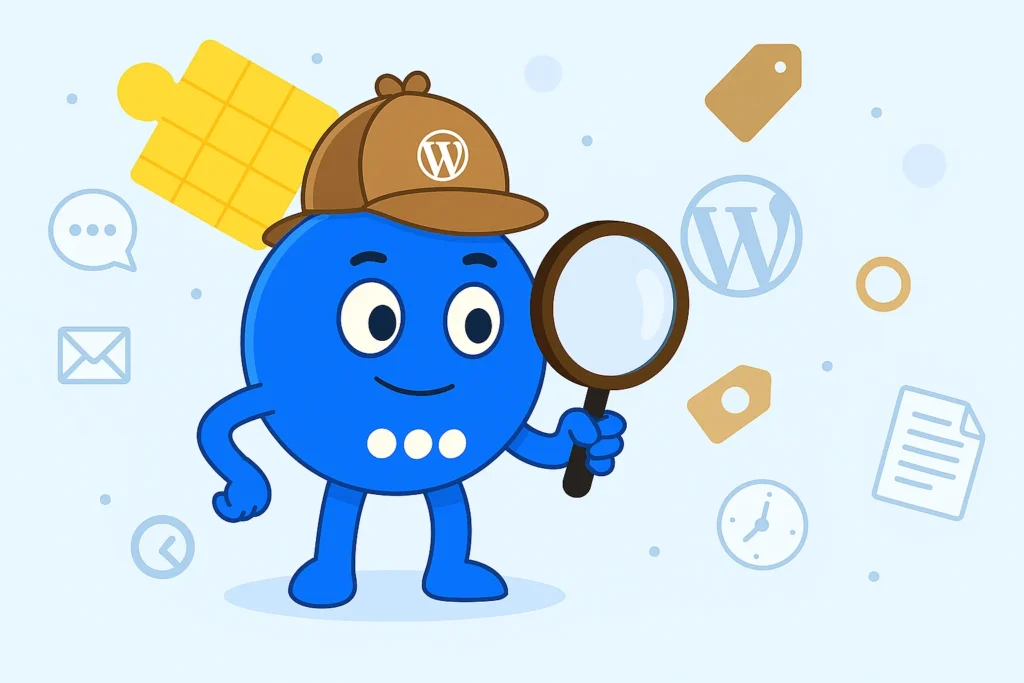
To make sure your brand persona on WhatsApp is effective, it needs to be consistent, easy to interact with, and constantly improving. Here’s how to bring it to life and keep it working smoothly:
1. Ensuring Consistency Across All Automated and Human Touchpoints
Keep the brand voice the same across all interactions, whether with AI or human agents.
- Unified Brand Voice: Your brand should sound the same in all communications, whether it’s an automated bot or a human agent. Inconsistencies can confuse users and damage trust.
- Voice Guides: Create guides that explain how the brand should sound, with examples and rules. Share these guides with all team members (e.g., content creators, customer service) to keep the tone consistent.
- AI Role: Just like a human employee, the AI should have clear guidelines on what it can and cannot talk about. This ensures the bot stays on track and doesn’t accidentally share private or irrelevant information.
2. Best Practices for Transparent Human-Bot Handoffs and Error Management
Be clear with customers about when they are talking to a bot, and ensure smooth handoffs to human agents when necessary.
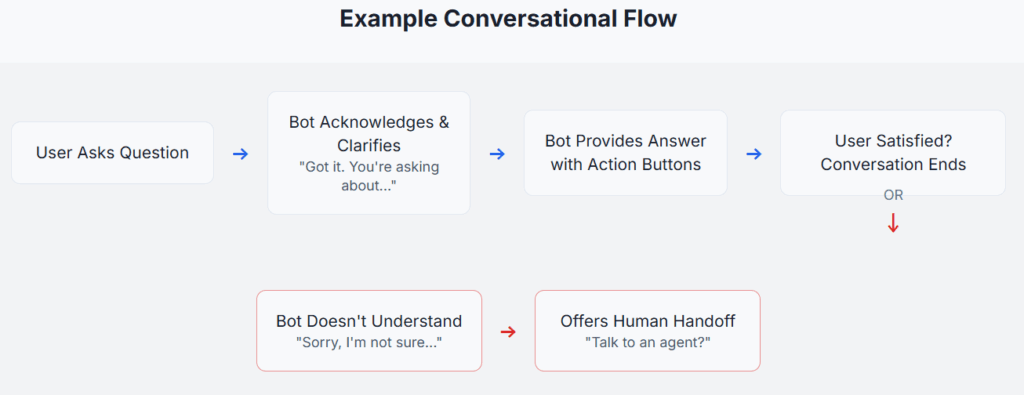
- Transparent Introduction: Always let users know they’re talking to a bot by saying something like, “Hi, I’m YourSupportBot. How can I assist you today?“
- Easy Human Handoff: Provide a clear option for users to talk to a human when needed. If the bot can’t solve a problem, it should pass the conversation smoothly to a human agent.
- Sharing Information: When the handoff happens, the human agent should have all the information the bot collected. This saves time and prevents the user from having to repeat themselves.
- Proactive Error Handling: If the bot doesn’t understand something, it should:
– Apologize and offer alternatives.
– Politely ask the user to rephrase.
– If needed, connect to a human and explain the bot’s limitations.
3. Visual Design Elements for Chatbot Entry Points and In-Chat Experience
Make the chatbot’s interface clear, easy to use, and aligned with your brand’s identity.
a. Chatbot Entry Points (FAB)
- Use a Floating Action Button (FAB) to make it easy for users to start a conversation. The button should clearly show what action it performs, like “Start Chat” or “Ask a Question.”
- Place the button in a convenient spot on the screen (like the bottom-right) for easy access.
b. In-Chat Design
- The chat window should be clean, with clear text bubbles and enough space to make reading easy.
- Use quick replies and buttons to guide the conversation and make it easier for users to interact with the bot.
- Avoid generic buttons like “Yes/No” and instead use specific labels that guide users to the next step (e.g., “Book a flight” or “Check my order”).
c. Brand Consistency
The chat design should match the brand’s visual identity. Colors, fonts, and images should align with the brand’s overall look to reinforce its persona.
4. A Multidisciplinary Approach to Persona Development
Creating a strong persona involves collaboration from different teams, including UX, design, and copywriting.
- Cross-Disciplinary Collaboration: Work with conversation designers, copywriters, UX designers, and visual designers to create a seamless and consistent persona that aligns with your brand.
- Integrating Design with Conversation: In a platform like WhatsApp, design and conversation are closely connected. The visual design and language should work together to create a cohesive, engaging experience.
Bringing your WhatsApp brand persona to life involves consistent communication, smooth transitions between bot and human agents, effective visual design, and ongoing optimization. By ensuring consistency across all touchpoints and creating a seamless user experience, your chatbot can provide valuable, personalized interactions that build trust and loyalty with your customers.
The Evolving Landscape: Future Trends and Ethical Considerations

The future of conversational AI is headed toward more personalized, interactive, and emotionally aware experiences. Let’s break down the key trends, challenges, and ethical issues in the future of AI.
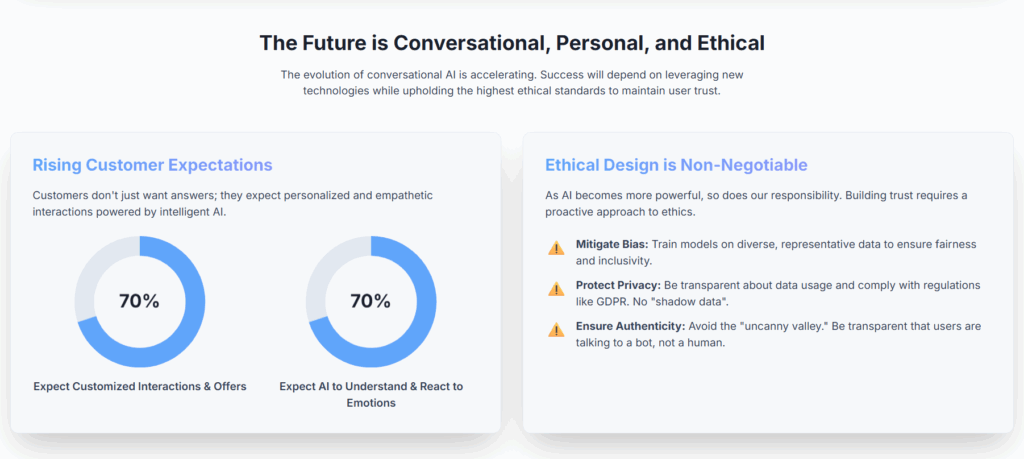
1. The Role of Hyper-Personalization, Multimodal AI, and Emotionally Aware AI
Conversational AI will evolve to offer more personalized, natural, and emotionally intelligent interactions.
- Hyper-Personalization:
– AI will use customer data and past behavior to customize each conversation, making interactions feel personalized.
– 70% of customers expect AI to offer tailored experiences, and many are willing to share more data to get personalized interactions. - Multimodal AI:
– AI will go beyond just text and include voice, video, and even gestures, making interactions feel more natural and intuitive.
– By 2026, 40% of AI models will combine text, images, video, and audio for a richer experience. - Emotionally Aware AI:
– AI will be able to detect and react to emotions like frustration or happiness through sentiment analysis.
– 70% of users want AI to understand their emotions, allowing the AI to be more empathetic or escalate to human agents when needed.
Challenges:
Current AI systems have limitations, such as not being able to remember long-term data, which can impact performance and user experience. Continued investment and training are required to address these gaps.
2. Navigating Ethical AI Persona Design and Mitigating Biases
Ethical issues become more important as AI personas get more advanced. We must be cautious of biases, privacy risks, and authenticity.
- Bias Amplification
AI can repeat stereotypes if it’s trained on biased data, leading to inaccurate portrayals of people or groups. - Privacy Erosion
Using data collected without consent (called “shadow data”) can violate privacy laws like GDPR, damaging trust. - Authenticity vs. Curation
Over-polishing a bot’s personality might make it seem fake and disconnected from the real brand identity, leading users to feel it’s not genuine. - The Uncanny Valley
If a bot feels too human but isn’t quite real, it can make users uncomfortable, known as the “uncanny valley” effect.
3. The Hybrid Model for Ethical AI Development
Combining AI with human oversight helps address ethical concerns.
- AI for Breadth, Humans for Depth
While AI handles large amounts of data, humans are needed to understand the nuances and emotional subtleties that AI cannot pick up. - Ethical Governance
Businesses must be transparent about how data is used, audit AI systems regularly, and make sure AI is fair and non-discriminatory. - Balancing Innovation and Ethics
By combining AI’s power with human insight, companies can ensure that their AI systems are both innovative and responsible, fostering trust and loyalty.
The future of conversational AI is exciting, with more personalized, multimodal, and emotionally intelligent interactions on the horizon. However, it’s crucial to address ethical concerns like bias, privacy, and authenticity. By integrating AI with human oversight, businesses can create meaningful, trustworthy relationships with customers and ensure that AI enhances the customer experience without compromising ethics.
Connecting Persona to the Floating Awesome Button (FAB): Your Brand’s First Hello

You’ve painstakingly defined your WhatsApp brand persona – its voice, its tone, its very soul. But how does this abstract blueprint translate into the real world, especially when a customer first decides to reach out?
This is where your Floating Awesome Button (FAB) plays a critical, yet often underestimated, role. It’s not just a button; it’s your brand’s first conversational handshake, the very first touchpoint of your “invisible UI.”
Think of the FAB button as the welcoming smile at the entrance of your digital store. Its design and accompanying text set the immediate expectation for the conversation that’s about to unfold. If your brand persona is friendly and approachable, your FAB button should convey that instantly. If it’s efficient and professional, the button should reflect that directness.
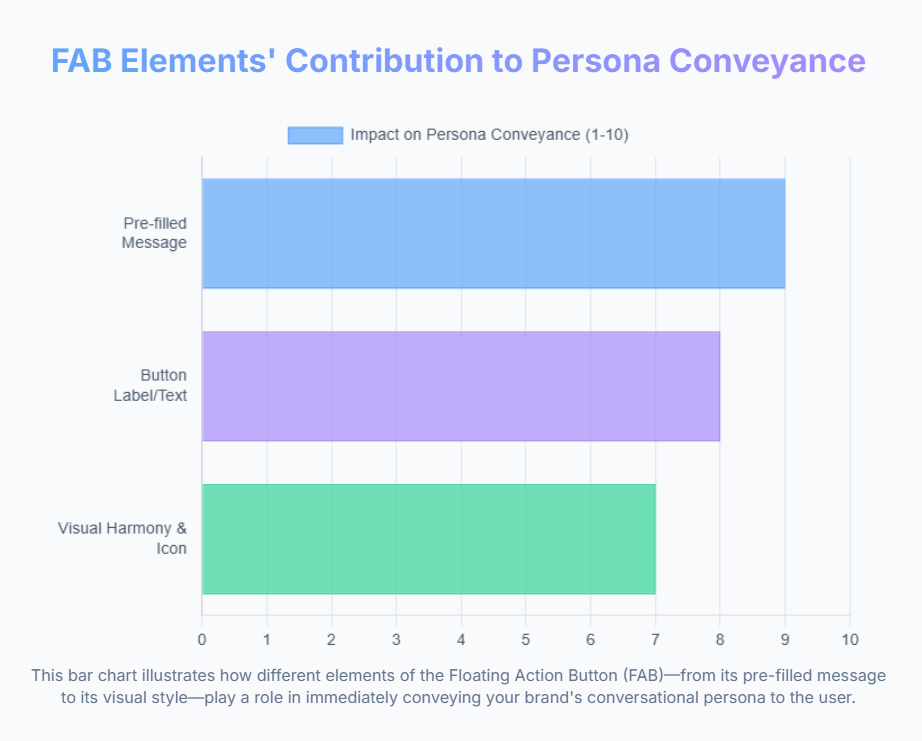
Here’s how to ensure your FAB button is a true extension of your carefully crafted WhatsApp brand persona:
1. First Impression from the Click: Crafting the Pre-filled Message
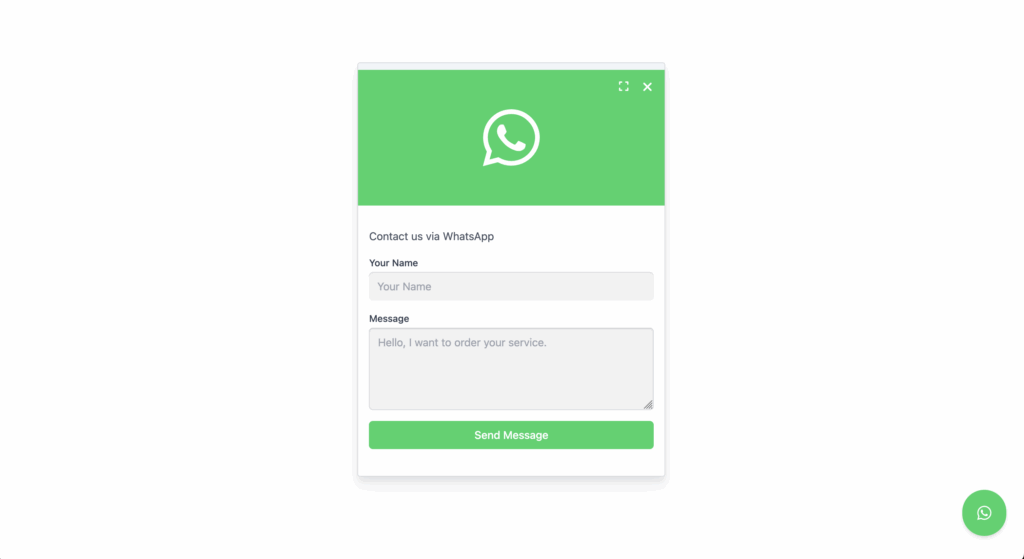
The most powerful way FAB allows you to express your persona immediately is through the pre-filled message. This is the text that automatically appears in the user’s WhatsApp chat window when they click your button.
- Friendly & Welcoming: Instead of just “Hello,” try “Hi there! I saw your button on your website and would love to chat.” or “Hey! Ready to help. What can we do for you today?“
- Direct & Efficient: “I’m interested in [Product/Service Name]. Can you assist me?” or “Support needed. Please tell me more about my query.”
- Contextual: If your FAB button appears on a specific product page, the pre-filled message could be, “Hi, I’m on your [Product Name] page. Can you tell me more about it?” – immediately showing your brand is attentive and helpful.
This initial message acts as the overture to your brand’s conversational symphony.
2. Setting Expectations with the Button’s Label/Text

If your FAB button includes a text label (like “Chat with Us” or “WhatsApp Support“), ensure this mini-call-to-action also aligns with your persona.
- A “Chat with our Friendly Team!” label speaks to an approachable persona.
- “Get Instant Support” signals an efficient and solution-oriented brand.
- “Ask Our Experts” suggests a knowledgeable and authoritative persona.
Even these few words should be consistent with the voice you’ve defined.
3. Visual Harmony & Brand Consistency
While primarily a UI tool, FAB also contributes visually. Ensure the WhatsApp icon, its color, and its placement on your website contribute to your overall brand aesthetics. If your brand uses a specific shade of green, ensure the button complements it. This subtle visual alignment primes the user for a consistent brand experience, even before the chat begins.
4. The Seamless Transition: From Button to Conversation
The ultimate goal is a seamless experience. When a user clicks your FAB button and lands in WhatsApp, the next message they receive (whether an automated greeting or a human reply) must effortlessly pick up the persona where the button left off. There should be no jarring shift in tone or personality. Your FAB button is the initial handshake; the ensuing conversation is the deepening of that connection.
By meticulously aligning your FAB button’s setup with your brand’s defined WhatsApp persona, you create a powerful, cohesive customer journey from the very first click, setting the stage for truly engaging and effective conversations.
Conclusion: Your Authentic WhatsApp Voice Awaits
In a world where every tap and text shapes your customer’s perception, your WhatsApp presence is more than just a communication channel – it’s a living, breathing extension of your brand. We’ve explored how defining your WhatsApp brand persona isn’t just a nice-to-have; it’s the “invisible UI” that builds trust, fosters genuine connection, and transforms casual chats into meaningful relationships. From the warmth of your automated greetings to the empathy in your support replies, a consistent, authentic voice is your most powerful asset.
Remember, this journey often begins with a single click. Tools like the Floating Awesome Button (FAB) seamlessly bridge the gap between your website and your WhatsApp chat, serving as the crucial first handshake. It’s the moment your meticulously crafted persona, even in a pre-filled message, sets the stage for a delightful and distinctly your brand experience.
Don’t let your brand’s true voice get lost in the noise. By investing in a well-defined WhatsApp persona and embracing the tools and expertise available, you’re not just messaging customers; you’re cultivating loyalty, driving growth, and revolutionizing how your business connects in the digital age. It’s time to let your brand’s unique voice shine through, one authentic WhatsApp conversation at a time.


